Key takeaways:
- Exploration-driven games foster a personal connection between players and the game world, evoking a range of emotions and a sense of discovery.
- Key programming concepts like pathfinding algorithms, state management, and modular design enhance player experience and allow for immersive environments and updated content.
- Engaging game worlds depend on attention to detail and a balance between guided exploration and player freedom, encouraging players to uncover secrets and stay motivated.
- Implementing feedback loops and balancing challenges with meaningful rewards keep players engaged and invested in their gaming journey.
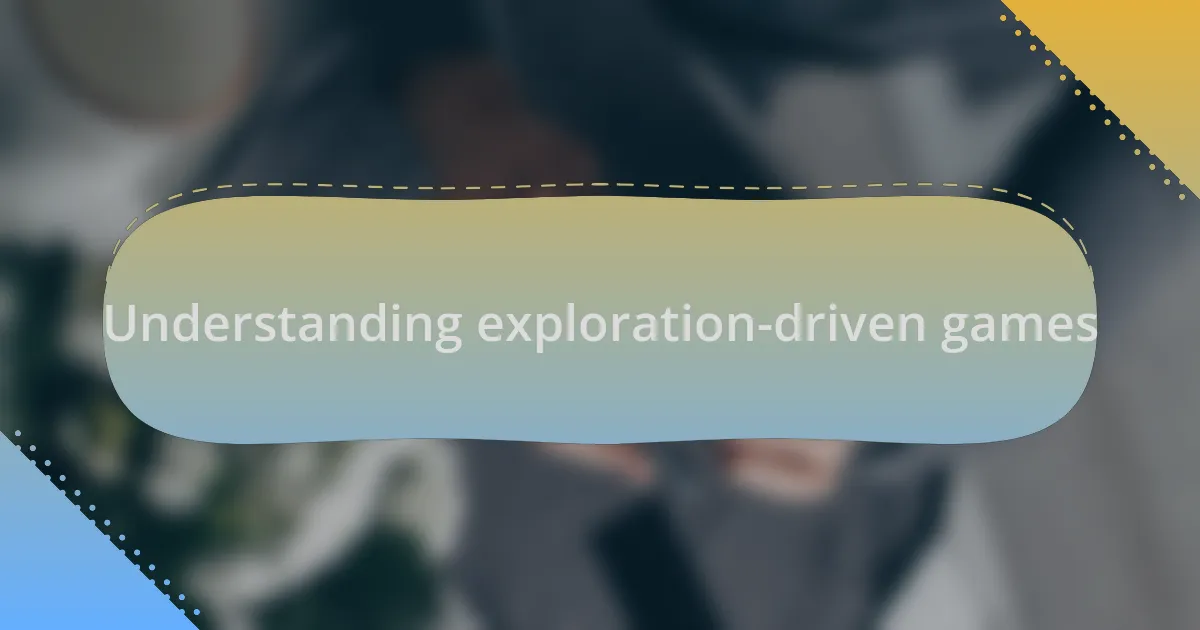
Understanding exploration-driven games
Exploration-driven games invite players to traverse vast worlds filled with secrets, puzzles, and interactive environments. I remember the thrill of my first foray into an open-world title, where I wandered off the beaten path and stumbled upon a hidden quest. That sense of discovery is what makes these games so captivating and why they resonate with players who crave adventure.
In my experience, the magic of exploration-driven games lies in their ability to immerse you in a narrative shaped by your curiosity. Have you ever felt that impulsive urge to check what’s behind the waterfall or on top of a distant hill? Those organic moments create a unique bond between the player and the game world, allowing for a personalized story to unfold with each venture.
I often find myself reflecting on how these games evoke an array of emotions—wonder, excitement, even a hint of loneliness in desolate landscapes. There’s a beauty in solitude as you traverse empty valleys or navigate sprawling ruins. It’s this emotional depth that keeps players engaged, wanting to uncover every detail and share their discoveries with others.
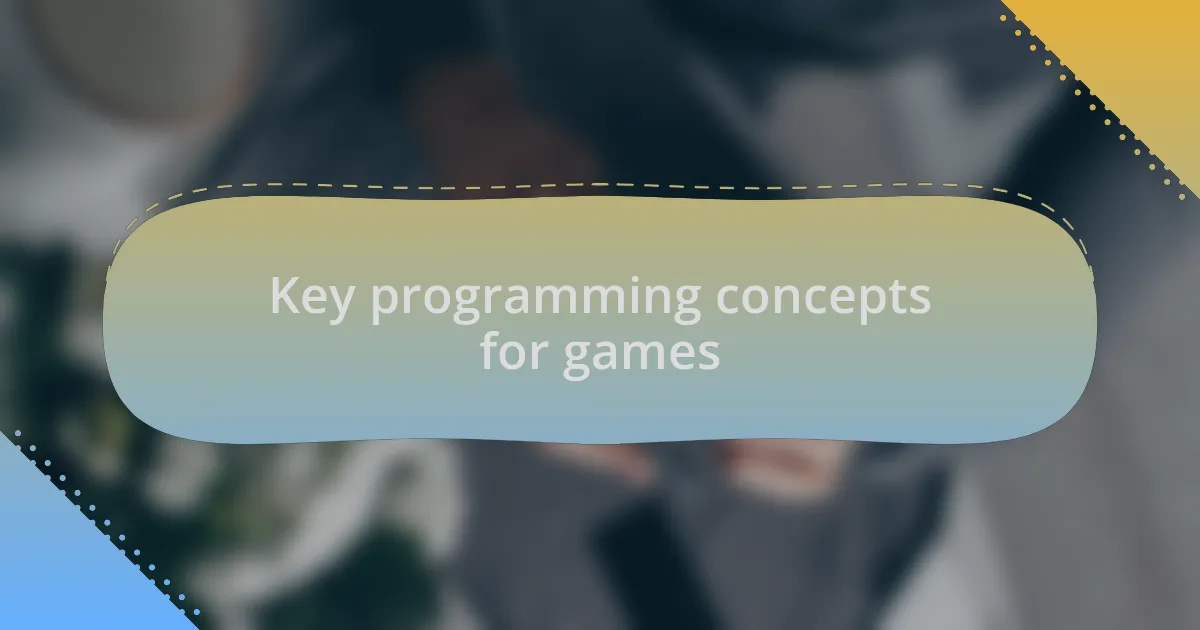
Key programming concepts for games
When it comes to programming exploration-driven games, a solid understanding of algorithms is crucial. For instance, pathfinding algorithms like A* can guide characters through complex environments, helping them navigate toward objectives while avoiding obstacles. I remember when I first implemented A*, and that moment of seeing NPCs move realistically through terrain felt rewarding—it was like bringing my digital world to life.
Another key concept is state management, which ensures that the game can track player progress and dynamic changes within the environment. Think about how frustrating it can be when you lose progress after discovering a hidden area. By effectively managing game states, I’ve created seamless experiences where players can feel the weight of their choices, enhancing the overall immersion and giving meaning to their explorations.
Finally, the use of modular design in game development allows for easy updates and expansions. I once built a game feature using a modular architecture that permitted the addition of new quests without overhauling the entire system. This adaptability not only keeps the gameplay fresh but also encourages ongoing exploration, as players can anticipate new content and experiences. How satisfying is it to know that your game can evolve just as much as its players do?
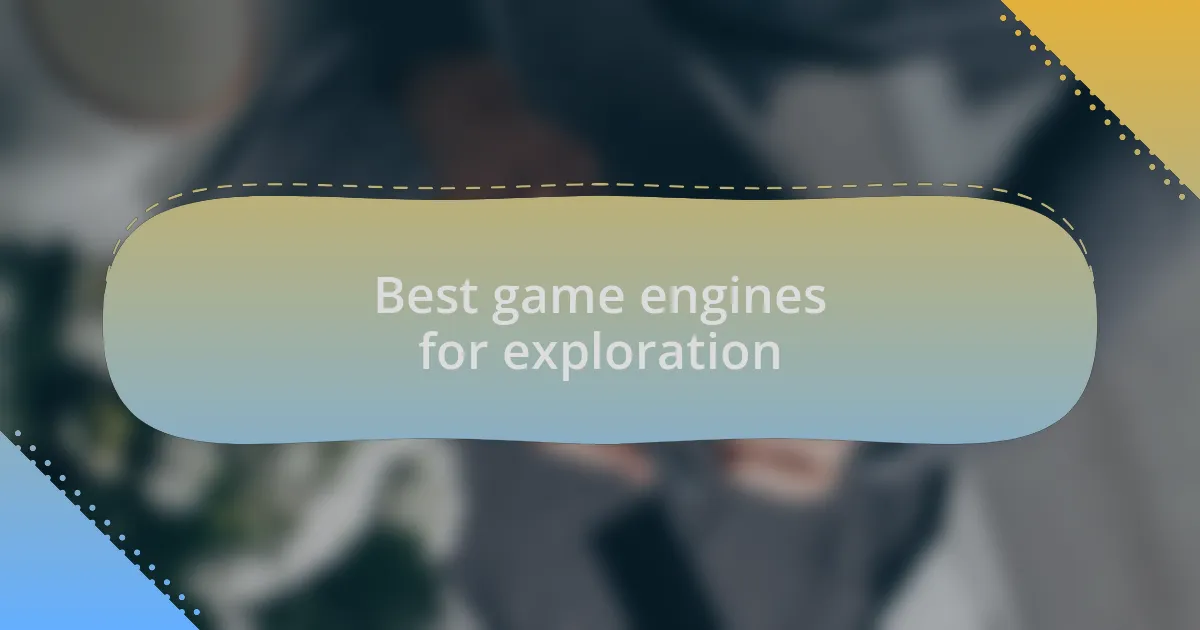
Best game engines for exploration
When considering engines for exploration-driven games, Godot stands out for its versatility and user-friendly interface. In one of my earlier projects, the ability to customize scenes effortlessly allowed me to create intricate environments without feeling overwhelmed. Do you remember the joy of wandering through a richly detailed landscape? Godot makes that experience accessible for developers at every skill level.
Unity, on the other hand, provides an extensive library of assets and tools that can elevate the exploration experience. I vividly recall experimenting with Unity’s terrain tools; creating vast landscapes filled with hidden caves and lush forests was both fun and fulfilling. Unity fosters creativity in exploration, and the numerous community resources can guide developers through any challenges they face.
Lastly, Unreal Engine often shines in producing stunning visuals for exploration-driven games. I once crafted a prototype in Unreal, and the lighting effects made my landscapes come alive, adding a layer of realism that captivated playtesters. Have you ever been mesmerized by an environment’s detail? Unreal’s capabilities enhance this feeling, allowing developers to invite players to truly immerse themselves in their creations.
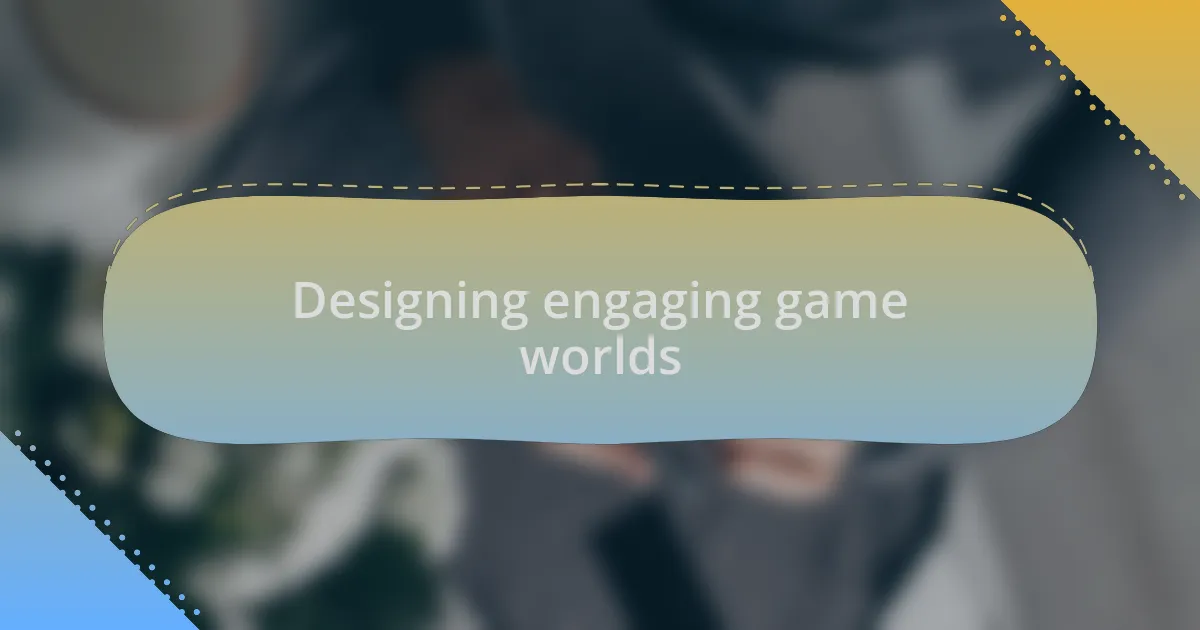
Designing engaging game worlds
Creating engaging game worlds is all about immersing players in a rich and dynamic environment. I remember the first time I crafted an expansive open world; every hill and valley was a story waiting to unfold. As players explore, they should feel a genuine connection to the space, almost as if each corner holds a secret just waiting to be discovered.
To achieve this, I focus on layering details. I once spent weeks perfecting the foliage and ambient sounds in a forest setting, and the response from playtesters was incredible. They described the world as “alive,” which reminded me that it’s the small touches—like rustling leaves or distant animal calls—that can elevate a game world from merely interesting to truly captivating. Have you noticed how an attention to detail can profoundly impact your emotional response when exploring a game?
Another key element is the flow of exploration. I distinctly recall a project where I designed winding paths that led players to unexpected discoveries. This intentional design kept them engaged, as they were constantly motivated to venture further. Reflecting on those moments, I realize how important it is to balance guidance with freedom, allowing players to forge their own narratives while still steering them toward meaningful experiences.
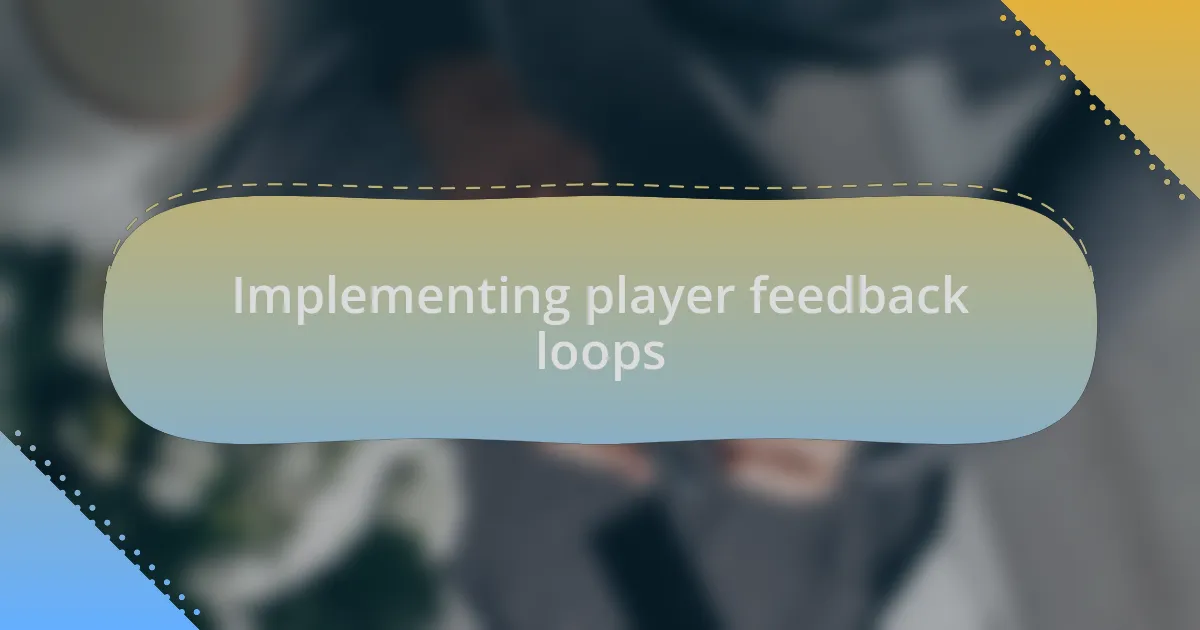
Implementing player feedback loops
Implementing player feedback loops is crucial for enhancing the overall gaming experience. I recall a pivotal moment when I introduced a system that responded dynamically to player decisions. As players made choices, immediate feedback—like visual changes in the environment or NPC reactions—heightened their sense of agency and investment in the game world. Have you ever noticed how your excitement doubles when your actions lead to tangible in-game results?
One effective strategy I’ve used is to tie player achievements to clear and rewarding feedback. In a game I developed, I incorporated sound cues and visual celebrations for milestones, making players feel acknowledged for their efforts. I remember the spark in a player’s eyes when they achieved a goal—they weren’t just progressing; they felt genuinely celebrated. This kind of recognition not only boosts motivation but also reinforces a player’s desire to explore further.
Moreover, I’ve found that soliciting player feedback during playtesting can lead to invaluable insights. One time, I made minor tweaks based on user comments, like adjusting the frequency of in-game rewards. The result was a noticeable uptick in engagement. Isn’t it fascinating how a few small adjustments based on direct player experiences can lead to a more compelling game?
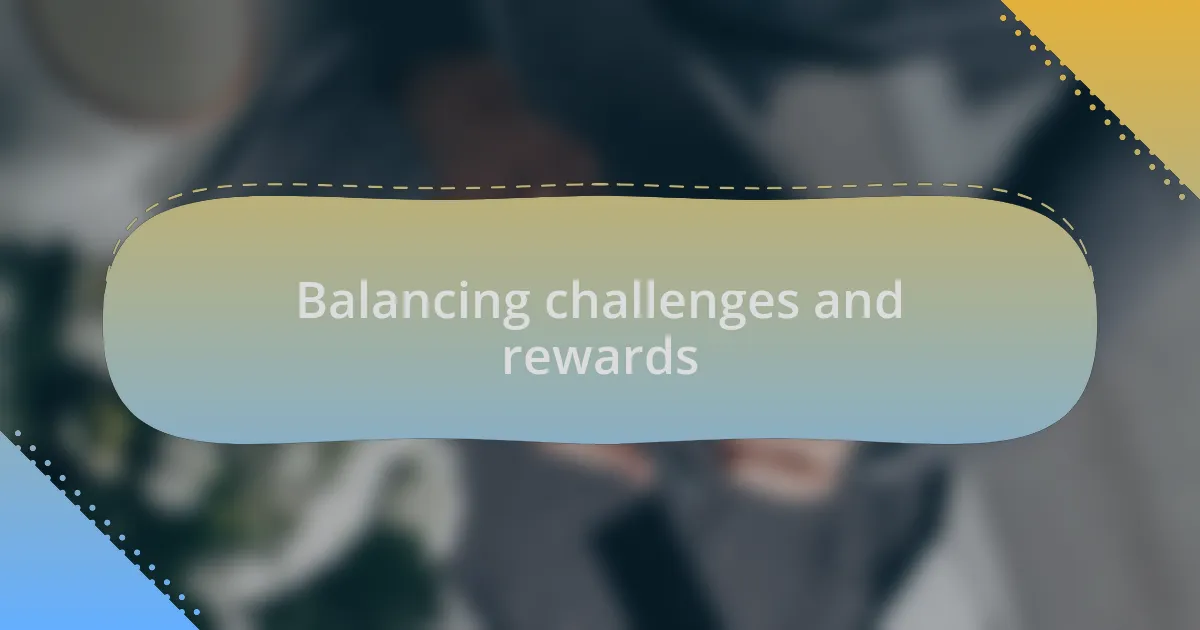
Balancing challenges and rewards
Finding the right balance between challenges and rewards is a delicate art. I remember a project where I introduced a challenging puzzle that stumped players—initially, I thought it added depth. However, after receiving feedback, I realized that the frustration outweighed the satisfaction of solving it. Have you ever played a game where a challenge just felt unfair? Adjusting the difficulty made the reward of overcoming it far more meaningful.
In my experience, strategic pacing of rewards can keep players engaged. For instance, in one game, I spaced out rewards to align with significant milestones rather than handing them out too frequently. When players finally reached that major achievement after facing tough obstacles, their sense of accomplishment was palpable. It’s like when you work hard for something and finally achieve it; that moment is pure joy.
Moreover, the types of rewards matter significantly. When I shifted the focus from simple point gains to unique in-game items or abilities, I noticed a remarkable increase in player motivation. Players not only felt a sense of progression but also looked forward to what lay ahead. It’s that anticipation, that thrill of what’s next, that makes the challenges worth facing, don’t you think?
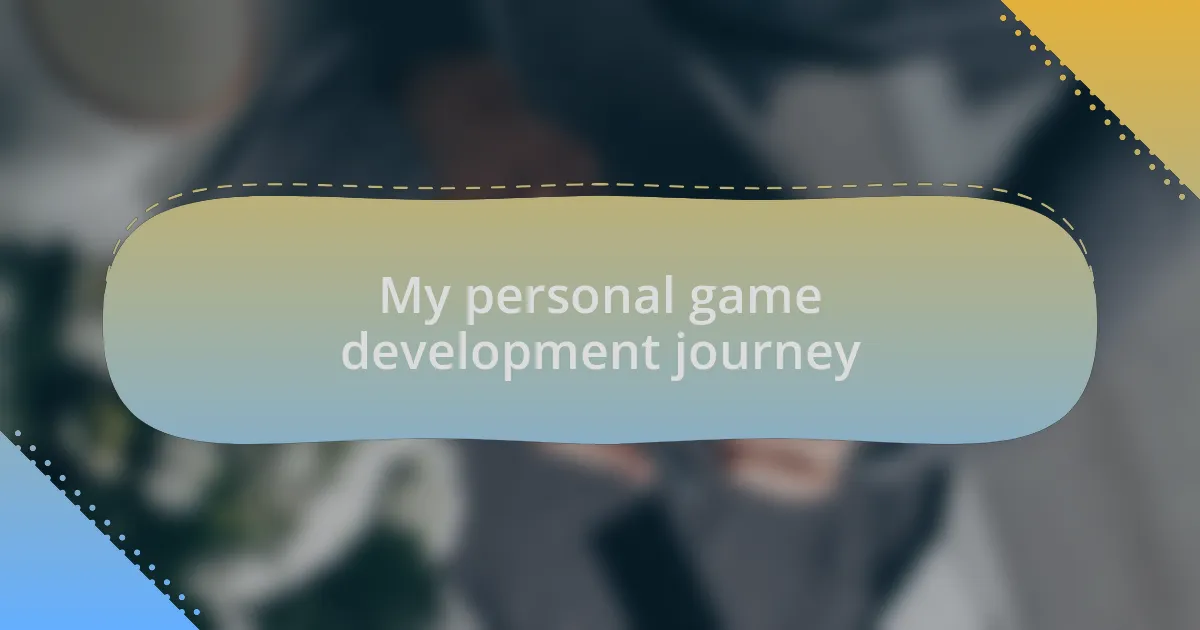
My personal game development journey
My journey in game development began with a simple passion for storytelling and exploration. I still remember the first game I created; it was a small platformer where players navigated a vibrant world filled with hidden secrets. The thrill of seeing others engage with my creation and discover those secrets was exhilarating. Have you ever created something and watched others experience it? That moment when a player finds a hidden easter egg is indescribable.
As I navigated through different projects, I quickly realized that player feedback was essential. There was a pivotal moment during the development of an adventure game where I introduced a vast open world. Initially, I was thrilled, envisioning players freely exploring every corner. However, I soon found that some players felt lost without clear direction. Adjusting my approach to include subtle guidance while maintaining that sense of freedom was a game changer. It was a lesson in listening to my audience—do you think it’s vital to adapt based on player experiences?
With each new project, I discovered more about myself and my creative process. One game I designed, centered around exploration, pushed me to confront my fears of failure. When I faced technical challenges, there were times I considered giving up. But overcoming those hurdles not only strengthened my skills but also deepened my appreciation for the craft. The blend of perseverance and joy in creating genuinely immersive experiences keeps me motivated. What drives your passion for creating? For me, it’s witnessing players truly connect with the worlds I’ve built.